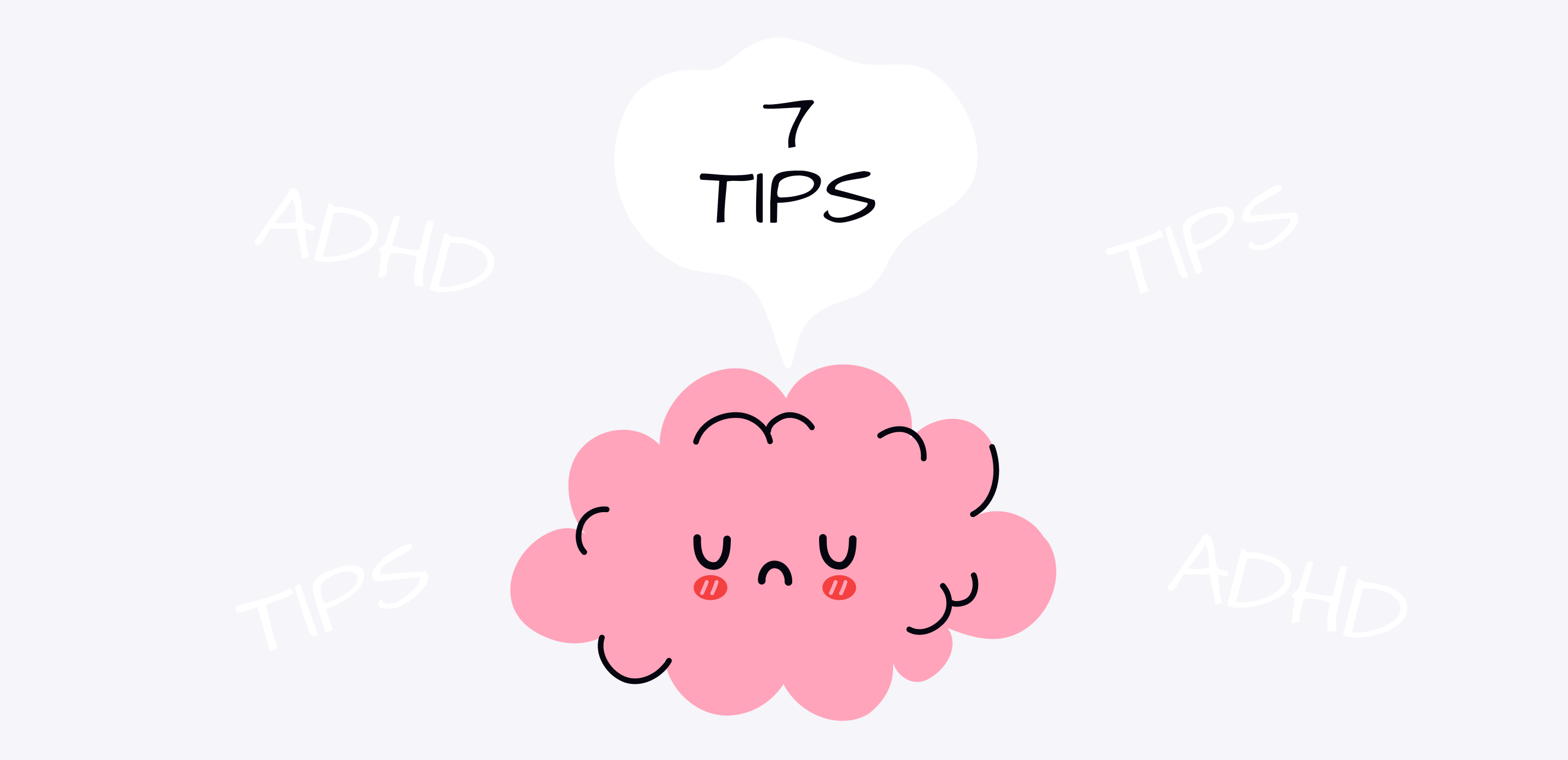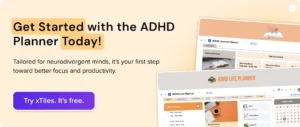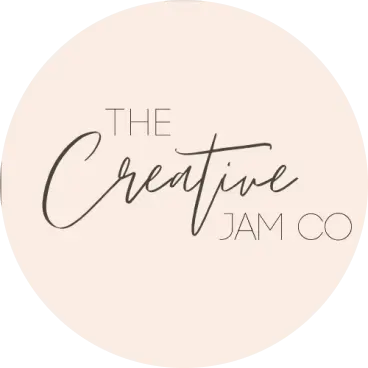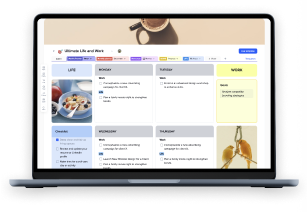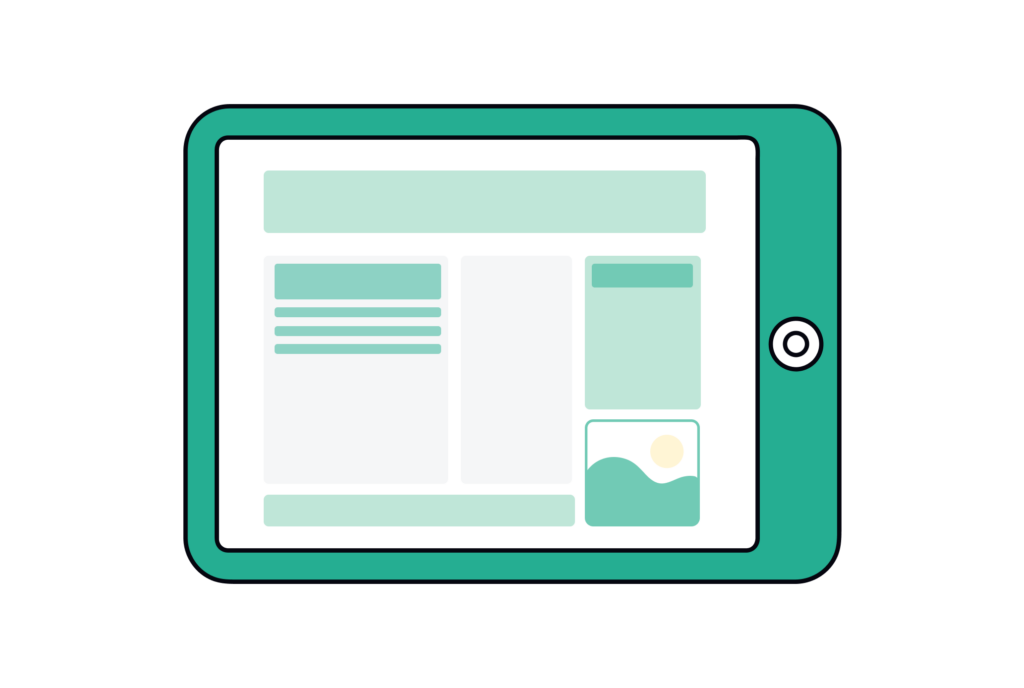Imagine sitting at your desk, ready to tackle the day’s tasks, only to find your attention snagged by every email notification, office chatter, or even the hum of the air conditioning. For individuals with Attention Deficit Hyperactivity Disorder (ADHD), this scenario is all too common. Effective management of ADHD is crucial for professional success and personal satisfaction.
xTiles stands out as a reliable method for overcoming the daily challenges faced by individuals with ADHD. It significantly contributes to productivity, enhances focus, aids in task achievement, and supports mental health overall.
Dive deeper into how to transform your daily routine and master your ADHD challenges.
Understanding ADHD
ADHD is a neurodevelopmental condition characterized by difficulty maintaining focus, hyperactivity, and impulsive behavior. In the workplace, ADHD symptoms can manifest as an inability to stay on task and keep focus, missed deadlines, and strained relationships with colleagues due to misunderstood actions or needs
Many of us, even those without ADHD, can find it difficult staying focused all the time, especially when it comes to a daunting task. Brain chemistry follows its own rules, and sometimes the only way to overcome its challenges is by using every available trick and tip.
Overcoming Productivity Challenges with ADHD
Living with Attention Deficit Hyperactivity Disorder (ADHD) presents unique challenges that extend into various aspects of life, from work and school to social interactions and personal projects.
Individuals grappling with ADHD symptoms such as distraction, procrastination, and poor time management might find their job performance, academic achievements, and personal relationships negatively impacted. The nature of ADHD can make even simple daily activities feel like being trapped in a rabbit hole, contributing to a cycle of stress and frustration.
However, research suggests that with specific strategies and interventions, it is possible to improve focus, preserve sustained attention, and navigate the daily hurdles more effectively. Understanding how to focus with ADHD is not just about willpower; it involves recognizing how brain chemistry influences attention and devising practical approaches to manage these effects.
Strategies for Success
To navigate these challenges, improve poor focus, better social life, and day-to-day motivation, here are seven practical strategies designed for individuals with ADHD to boost productivity and focus:
1. Create a Structured Plan
Attention Deficit Hyperactivity Disorder is often about chaos and poor organization. Relying solely on your intuition and good luck is an approach that leads to nowhere, even if you don’t have ADHD.
Use tools like xTiles to organize your day, setting aside specific times for work and breaks. The tool will help you with the technical part and tracking your progress. Goal setting is important, but it’s crucial to be realistic about what is achievable considering your ADHD.
A to-do list can help break down tasks into smaller actions, providing you with a manageable plan. Visual reminders and alarms can also serve as cues to stay concentrated on the task at hand.
2. Limit Distractions
Focusing with ADHD becomes harder depending on the task itself. For example, long documents might make you feel overwhelmed after some time. You start losing motivation the more you work, your hand reaches for your phone automatically, and next moment you’re chatting with your friends or scroll through your social media feed.
Create a personal workspace free from distractions. Common tricks like leaving your phone in the other room or locking it in your cabinet may work. However, there’s more technically advanced tips.
Your personal workspace contributes to your digital space organization. When all your projects and documents are piled together, finding the specific one you need becomes challenging, let alone concentrating on it. In xTiles, you can create separate projects yet keep them interconnected if necessary, using nested elements.
Consider using noise-canceling headphones or apps that limit your use of social media and other distracting websites.
Many people with ADHD also use side tricks like chewing gum or playing with fidget toys to stay focused on their original task.
3. Prioritize Tasks
Focus on one task at a time. Write down your current tasks and decide which ones are relevant at the moment and start working on them. This helps prevent the feeling of being overwhelmed and ensures that you’re making progress on your most important tasks.
Another great approach to manage your activities is breaking them into smaller, manageable steps. Large projects can feel overwhelming. By breaking them down into more manageable steps, you can reduce anxiety and make it easier to start and complete each step.
In xTiles, you can use color coding and tags to categorize your tasks depending on their priorities.
4. Use a Timer
Staying focused only for short periods of time isn’t necessarily a disadvantage. You can organize your work around these moments of enlightenment.
Work in short bursts using the Pomodoro Technique – 25 minutes of deep work followed by a 5-minute break. This can help maintain sustained focus over extended periods.
5. Incorporate Physical Activity
There are many methods of improving your focus, and not all of them are directly related to planning and organization. Research suggests that physical exercise can improve focus and cognitive function.
A brief walk or a session of stretching can help reset your attention. However, it’s important to choose the activity you like, otherwise, you can forget about productivity afterward because you will need more rest.
6. Practice Mindfulness
Mindfulness exercises can improve your ability to stay focused on the present moment, making it easier to complete tasks, and stay on track. Activities such as meditation, yoga, or even simple breathing exercises can be essential for improving focus and reducing impulsivity by calming the mind and body.
7. Seek Professional Support
Sometimes, managing ADHD requires the assistance of a mental health professional who can provide tailored ADHD treatment strategies and support.
Working with a mental health professional or an ADHD coach can provide personalized strategies and support. ADHD treatment may include behavioral therapy, coaching, and sometimes medication to help manage symptoms.
Self-Care and Support
Managing ADHD challenges isn’t just about productivity; it’s also about self-care. Ensuring adequate sleep, maintaining a healthy diet, and finding ways to manage stress are vital. Communicate your needs to those around you and consider working with an ADHD coach for personalized strategies.
Prioritize Adequate Sleep
Quality sleep is a cornerstone of ADHD management. Poor sleep can exacerbate ADHD symptoms, making it harder to maintain focus or regulate emotions. Establishing a consistent sleep schedule, creating a restful sleeping environment, and minimizing screen time before bed can significantly improve sleep quality.
Maintain a Balanced Diet
Nutrition plays a crucial role in managing ADHD. Certain foods can impact brain function and mood, while a balanced diet rich in fruits, vegetables, whole grains, lean protein, and healthy fats can support overall brain health. Consider consulting with a nutritionist who has experience with ADHD to create a diet plan that supports your specific needs.
Develop Stress Management Techniques
Individuals with ADHD often experience heightened stress levels, which can further impair their ability to manage symptoms. Techniques such as mindfulness meditation, deep breathing exercises, and progressive muscle relaxation can help mitigate stress and promote emotional stability.
Embrace a Routine
Establishing a predictable routine can provide a sense of stability and reduce the overwhelm caused by ADHD. Structured daily and weekly schedules help in managing time effectively, ensuring that both personal and professional tasks are addressed.
Tool Recommendation
To manage your daily routine and minimize distractions, it’s essential to find a versatile, all-in-one tool. Utilizing too many tools for your daily needs can actually lead to increased distractions and feelings of being overwhelmed.
Planning tools provide various solutions for managing daily tasks, specifically designed with your ADHD challenges in mind. For instance, xTiles offers customizable features that enable users to craft a focused workspace, effectively organizing tasks and deadlines. This approach not only streamlines your workflow but also caters directly to the unique needs of individuals with ADHD, making it easier to stay on track and reduce the clutter that often leads to distraction.
Choosing the right planning tool when you have ADHD can significantly impact your daily productivity and overall stress levels. Here are a few points to consider when choosing your productivity app:
- Simplicity and ease of use
- Customizability
- Integration capabilities
- Visual appeal
- Accessibility
- Reminder functions
- Trial period or free version
- Ongoing support
Conclusion
Embracing strategies to focus with ADHD is a journey of self-improvement and discovery. Success is within reach with dedication, the right techniques, and supportive tools like xTiles. Join our community today and take the next step toward enhancing your productivity and achieving your goals.
FAQ
How do I plan my daily routine?
Start by identifying your most productive times of the day and schedule challenging tasks during these periods. Use a digital tool like xTiles to outline your tasks and break them down into smaller, more manageable actions.
How do I plan my perfect day?
A perfect day balances productivity with self-care. Allocate time for deep work, physical activity, and relaxation. Prioritize tasks and use tools to stay organized.
How do I make a daily plan?
List your tasks for the day, estimate the time needed for each, and schedule them based on priority and energy levels. Incorporate breaks and time for unexpected activities or delays.
What is the meaning of a daily plan?
A daily plan is a structured outline of tasks, activities, and goals you aim to achieve within a day, designed to enhance productivity and ensure time is used efficiently.
What is the perfect daily schedule?
The perfect daily schedule varies among individuals but generally includes time for deep work sessions, rest, personal interests, and self-care, tailored to one’s productivity patterns and lifestyle.


